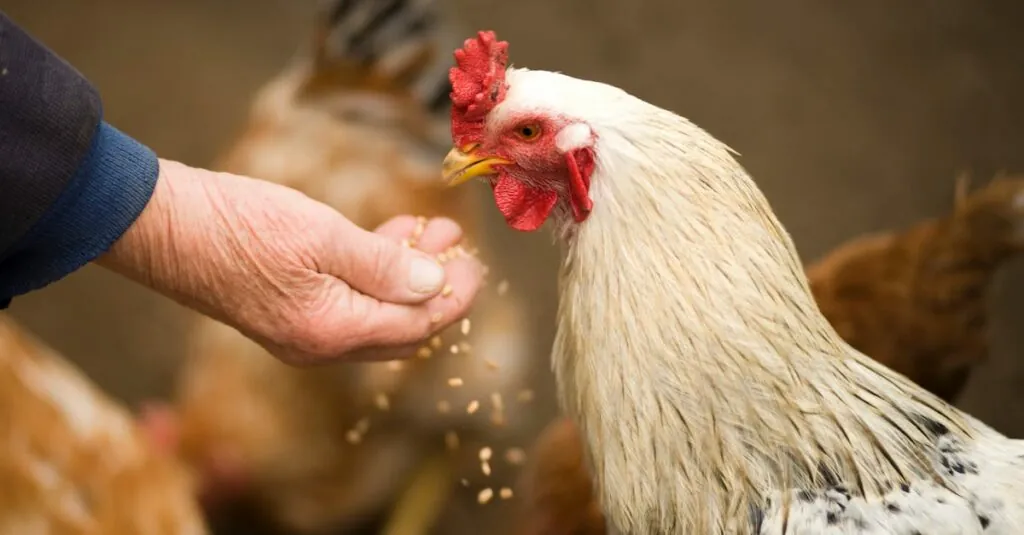Table of Contents
ToggleImagine waking up to the sun streaming through your window, knowing you’re not just another cog in the consumer machine. Welcome to the world of self-sustainable living, where you can grow your own food, harness the power of the sun, and maybe even impress your neighbors with your composting skills. Yes, it’s time to trade in those takeout menus for a garden full of fresh veggies and a lifestyle that’s as good for the planet as it is for your wallet.
Self-sustainable living isn’t just a trend; it’s a lifestyle that empowers individuals to take control of their resources. By embracing this way of life, one can reduce their carbon footprint, save money, and enjoy the satisfaction of being self-reliant. So why not dive into the delightful chaos of DIY projects and eco-friendly choices? After all, who wouldn’t want to be the proud owner of a thriving herb garden and a homemade solar oven?
Understanding Self Sustainable Living
Self-sustainable living encompasses practices that enable individuals to meet their needs with minimal reliance on external resources. Growing food at home forms the foundation of this lifestyle, allowing people to cultivate vegetables and fruits, ensuring fresh produce year-round. Utilizing renewable energy sources like solar panels significantly reduces dependence on fossil fuels while lowering energy bills.
Composting plays a crucial role in self-sustainability. It transforms kitchen scraps and yard waste into nutrient-rich soil, enhancing garden health without chemical fertilizers. By minimizing waste sent to landfills, composting contributes to a cleaner environment.
Water conservation also proves vital. Implementing rainwater harvesting systems captures and stores rain for irrigation, thereby reducing municipal water reliance. Each of these components fosters efficiency and sustainability in everyday life.
DIY projects serve as another integral aspect. Creating homemade items, from cleaning supplies to furniture, cultivates resourcefulness while reducing environmental impact. These endeavors promote creativity and minimize reliance on mass-produced products.
Education about sustainable practices expands awareness and skills. Attending workshops and reading relevant literature increases knowledge of eco-friendly practices, reinforcing commitment to this lifestyle. Engaging with like-minded individuals fosters a supportive community.
Self-sustainable living leads to personal empowerment through resource management. Understanding the connections between choices and environmental impact drives informed decisions. As individuals embrace this lifestyle, they contribute to a sustainable future for the planet.
Key Principles of Self Sustainable Living
Self-sustainable living revolves around essential practices that foster independence and environmental stewardship. It highlights ways individuals can reduce their reliance on external resources while promoting ecological balance.
Renewable Energy Sources
Renewable energy sources play a crucial role in self-sustainable living. Solar panels generate clean electricity, empowering homeowners to reduce energy bills while minimizing fossil fuel dependence. Wind turbines, where feasible, harness wind power to complement energy needs. Geothermal energy systems provide heating and cooling options, offering a consistent energy supply without emissions. Utilizing these renewable sources enables individuals to achieve greater energy independence. The investment in energy-efficient appliances further maximizes this efficiency, leading to significant savings over time. Exploring community energy solutions, such as cooperative solar projects, also enhances collective sustainability efforts.
Sustainable Gardening Practices
Sustainable gardening practices form the backbone of self-sustainable living. Engaging in organic gardening techniques helps avoid harmful pesticides and fertilizers, promoting healthier ecosystems. Companion planting, where diverse plants support each other’s growth, enhances yields while reducing pests naturally. Crop rotation maintains soil health and prevents nutrient depletion, ensuring long-term garden productivity. Utilizing native plants attracts beneficial insects and conserves water, aligning choices with local environments. Embracing permaculture principles creates self-sustaining ecosystems that require minimal intervention. Regularly composting kitchen waste enriches soil, fostering a regenerative cycle that empowers sustainability.
Benefits of Self Sustainable Living
Self-sustainable living provides numerous advantages, contributing to both individual well-being and environmental health.
Environmental Impact
Self-sustainability significantly reduces environmental strain. Engaging in renewable energy practices, like solar or wind, minimizes greenhouse gas emissions. Utilizing water conservation methods, such as rainwater harvesting, decreases demand on local water sources. Growing food organically further supports biodiversity and promotes healthier ecosystems. Composting kitchen waste enriches soil while diverting tons of organic matter from landfills annually. Adopting these sustainable practices fosters a cleaner, greener planet for future generations.
Financial Savings
Financial savings emerge as a key benefit of self-sustainable living. By growing food at home, individuals lower grocery bills and gain access to fresh produce. Installing solar panels reduces energy costs over time, leading to substantial long-term savings. Composting not only improves garden health but also saves money on fertilizers. DIY projects eliminate unnecessary expenses associated with commercial products. Reduced reliance on municipal services further cuts costs, making self-sustainable living a smart financial choice.
Challenges of Self Sustainable Living
Self-sustainable living presents various challenges that individuals must navigate. These hurdles can impact the feasibility and success of adopting such a lifestyle.
Initial Setup Costs
Initial setup costs can be substantial. Gardening supplies, solar panels, and rainwater harvesting systems require significant investment. For example, installing solar panels may range from $15,000 to $25,000, depending on the system’s capacity. Organic seeds, soil amendments, and compost bins add to the expense of starting a garden. Though long-term savings emerge from reduced energy bills and grocery costs, the upfront financial burden can deter many aspiring self-sustainable individuals.
Knowledge and Skills Required
Knowledge and skills required for self-sustainable living can be extensive. Mastering gardening techniques, renewable energy installation, and composting practices requires time and dedication. Learning about local climates and soil types enhances gardening success while understanding solar technology supports effective energy use. Workshops, online courses, and community resources provide valuable education. Engaging with experienced practitioners helps build essential skills but may necessitate significant commitment. The lack of prior knowledge can be a barrier that challenges new participants in the self-sustainable lifestyle.
Embracing self-sustainable living offers a pathway to a more fulfilling and eco-friendly lifestyle. By taking control of personal resources and making informed choices, individuals can significantly impact their environment and overall well-being. The journey toward self-sustainability might involve challenges, but the rewards are well worth the effort.
With a commitment to growing food, utilizing renewable energy, and practicing sustainable habits, anyone can contribute to a healthier planet. Engaging with a community and continuously learning about sustainable practices further enhances this rewarding journey. Ultimately, self-sustainable living is not just a trend; it’s a proactive approach to a better future for both individuals and the Earth.




